
What challenges should designers face now, as found at the GOOD DESIGN AWARDs.
FOCUSED ISSUES is a GOOD DESIGN AWARD initiative that depicts the future of design in society through the screening process.

2023 FOCUSED ISSUES
Considering “Brave Attitude, Organic Design”
Listening to non-human voices to reconstruct the communities along the river – Mattauw Earth Triennial “Gong Jow-Jiun x Yutaka Nakamura”
2024.03.21
Yutaka Nakamura, a researcher for the 2023 Focused Issues, mentioned “One Thousand Names of Zeng-wen River, 2022 Mattauw Earth Triennial,” which won a GOOD DESIGN GOLD AWARD, as an intriguing work from the perspectives of design as well as anthropology. How did they produce the art festival, which reconstructed the communities of humans and non-humans in the basins? Nakamura asked Gong Jow-Jiun, the general curator of this festival, about the production process of the art festival.
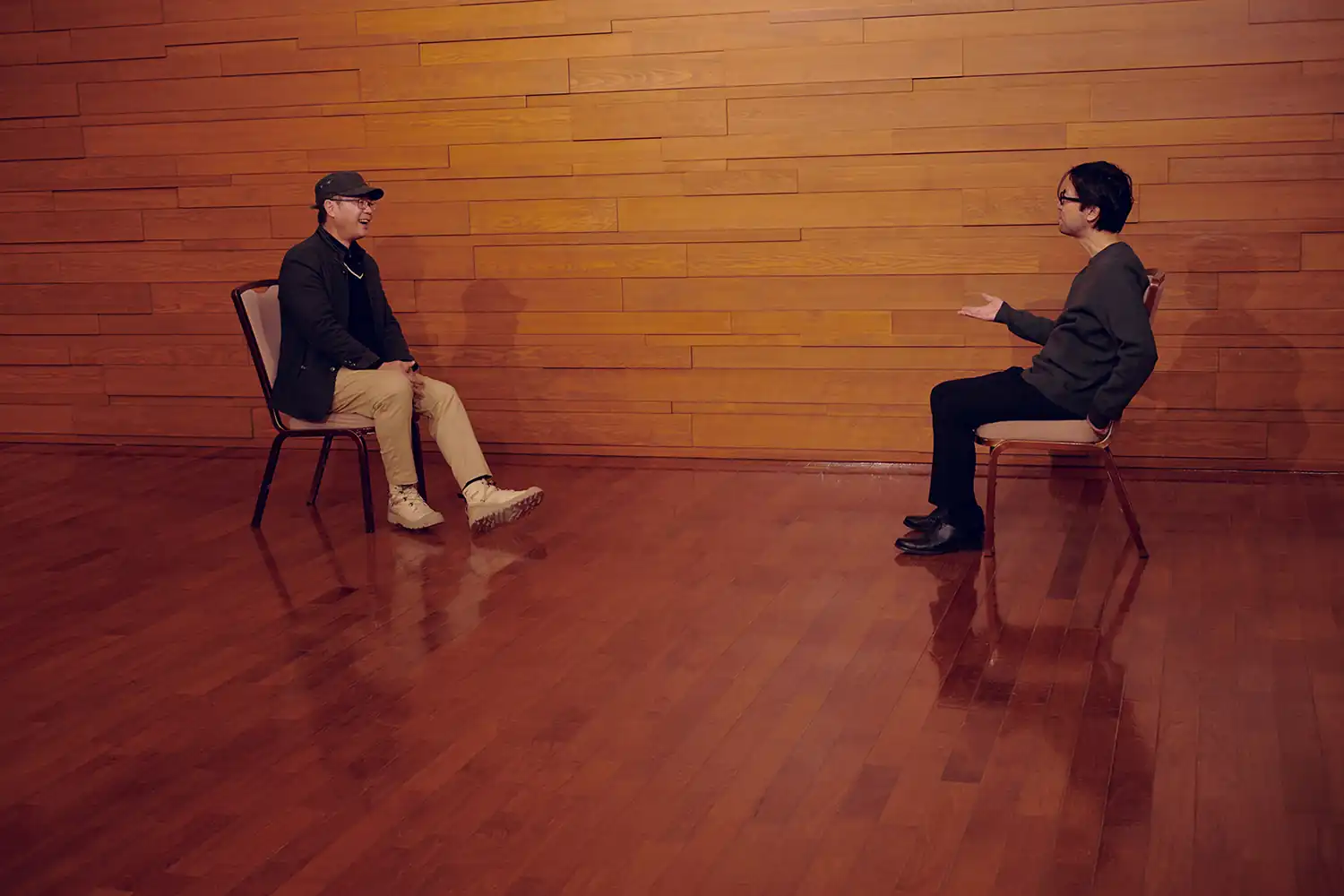
In 2023, Focused Issues, an initiative to redefine the issues that design should face today and make recommendations, was upgraded. Under a renewed vision of a “think tank of design,” we analyze the trends behind award-winning works and identify common themes to show society a direction to head for.
The theme of FY2023 is “Brave Attitude, Organic Design.” Yutaka Nakamura, anthropologist and professor at Tama Art University, plays a role as a researcher for Focused Issues, and he mentioned “One Thousand Names of Zeng-wen River, 2022 Mattauw Earth Triennial,” which won a GOOD DESIGN GOLD AWARD, as an intriguing work from the perspectives of design as well as anthropology.
https://www.g-mark.org/en/gallery/winners/19930This Art Festival was held at the basins of the Zeng-wen River running in Tainan City in Taiwan. They conducted fieldwork in the vast basins of the 138-kilometer-long river for three years and displayed the works created by artists based on the records. They had more than 250,000 visitors.
How did they produce the art festival, which reconstructed the communities of humans and non-humans in the basins? Nakamura asked Gong Jow-Jiun, professor of the Doctoral Program in Art Creation and Theory at Tainan National University of the Arts, having worked as the general curator, about the production process of the art festival.
Art festival that faced a common river
Nakamura Congratulations on winning a GOOD DESIGN GOLD AWARD. I would like to ask you about the background of the art festival. First of all, how did you start the project with the theme of the Zeng-wen River running in Tainan City?

Gong Before talking about it, let me first explain the theme setting of Mattauw Earth Triennial. This was the second time the art festival was held, and the theme for the first festival was sugar. It is because sugar is so important and familiar to the region that we cannot talk about Tainan without talking about it. Later when considering the theme for the second festival, it was the Zeng-wen River that we thought was as much integrated into the citizens’ lives as sugar.
Hearing this, you might imagine the Zeng-wen River is appreciated by the citizens. Unfortunately, that is not true. I am from Tainan. Although everyone knows the Zeng-wen River, sadly enough, nobody pays attention to it. However, the more indifferent people are, the worthier it is to rediscover it. We believed that it would be interesting to put a spotlight on the river.
Nakamura The Zeng-wen River was chosen this time because you thought you could gain a new realization from it under the theme of a strong link with the region and citizens. The Zeng-wen River is an expansive river with a total length of 138 kilometers. What regions does it run through?
Gong The river runs through three major areas: upstream, midstream, and downstream. Upstream, the indigenous Cou people live in an area with 2,000-meter-high mountains, and some water resources facilities dot, including Zengwen Dam, the biggest dam in Taiwan. In the midstream area, there is an aging farming community, where the Siraya and other people live. In the downstream, there are oyster and other farms and urban areas, and there is also a marsh of international importance, such as a sanctuary for black-faced spoonbills near Haikou, which is the world’s leading manufacturing hub for semiconductors.
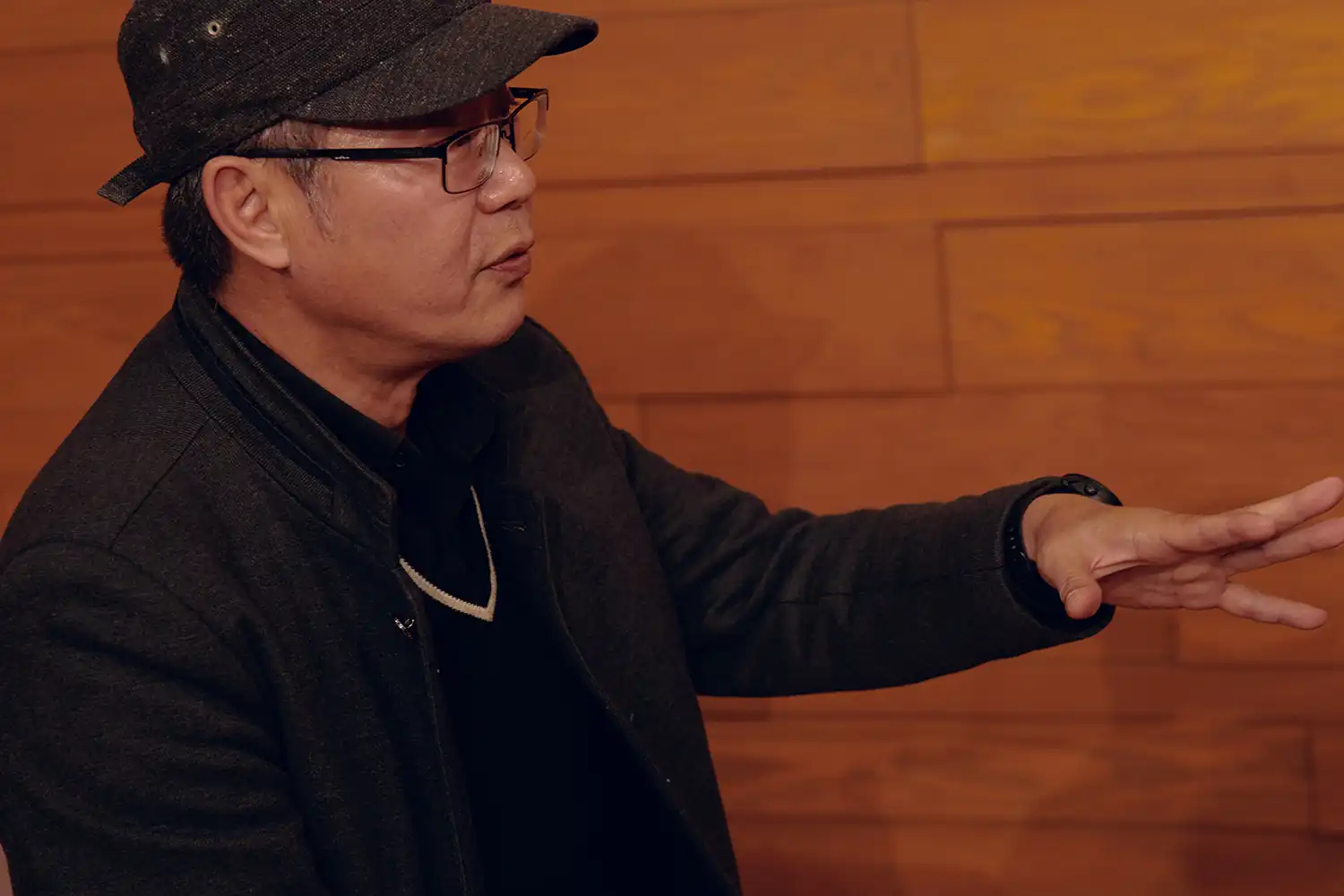
Nakamura I see there are a variety of cultures in the basins of the Zeng-wen River. I imagine that made it difficult to integrate them into a single art festival.
Gong You can say that again. The river basins have facilities and companies that manage forests and dams, and as the headstream of the river is not in Tainan City but in Chiayi, other local governments are also involved. A large number of stakeholders were involved.
However, as the Zeng-wen River has been affected by repeated embankment works and extreme weather, the rich ecosystem that used to exist is being destroyed now. We hoped to link people in different positions through art to create a River Basin Community, where people face the same reality and share a destiny.
Find forgotten names of basins with hunters
Nakamura The art festival promotes communication among facilities, companies, local governments, and local residents, who were not involved with each other before. This is not an easy task. I hear made extensive preparations for the art festival including three years of fieldwork. How did you proceed with the preparations for the event?
Gong In the first year, we launched “Hunter Guiding,” in which hunters showed people around the upstream area. In the second year, elementary school students produced “Little Things Newspaper,” and photographers took “underwater photographs,” which serve as records of the dynamism and changes of the river. In the third year, we conducted “farming information gathering” to research the culture of farmers.
In the “Hunter Guiding” in the first year, we conducted fieldwork in the upstream to find the headstream of the Zeng-wen River first. When we asked indigenous Cou people who hunt to become guides of forests, they fully cooperated with us. Artists and curators went into the mountains with the hunters many times to walk in forests, cross streams, and research the ecosystems of humans and non-humans living there.
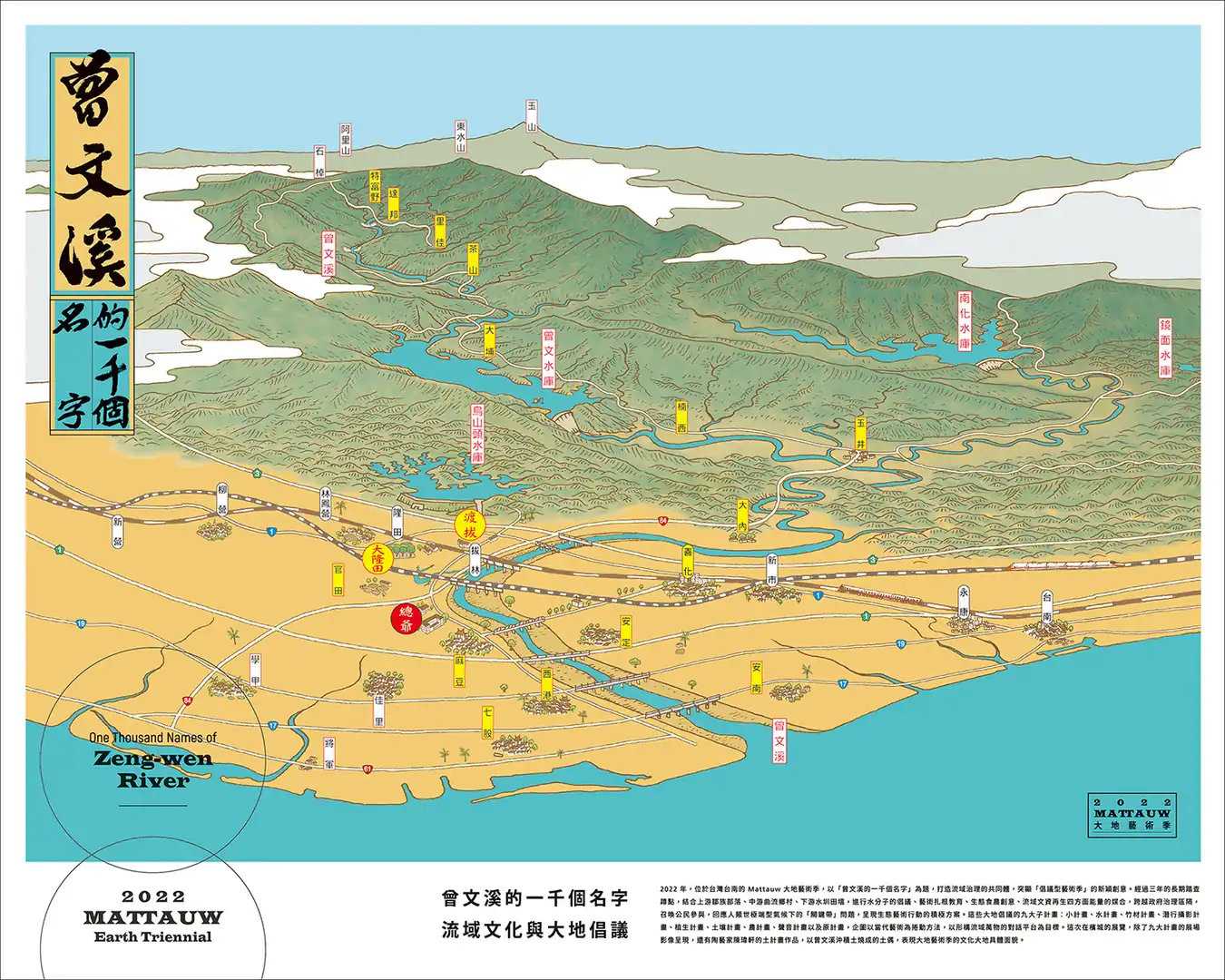
Gong While exploring the area together with hunters, we learned that they had named each basin. For example, they named landscapes “hiouana” (land of the rainbow) or “nsoana” (spring of beasts). We found it fascinating, and the Hunter Guiding was transformed into a journey to find names.
Nakamura “Naming” is a phenomenon widely seen across cultures in the entire humanity. In recent years, however, there has been a growing movement to redefine it in indigenous cultural groups with an ontology different from modern science, instead of understanding it unitarily. You gathered “indigenous names” like gathering pieces of a puzzle.
Gong Yes. We discovered as many as 120 names during the guided tours, which we took about 30 times. With each exploration, the number of discovered names increased. Then, our focus of the viewpoint on the basis of the Zeng-wen River became sharper.
Ultimately, by mapping discovered names, we completed the very first map with place names in the Cou language.
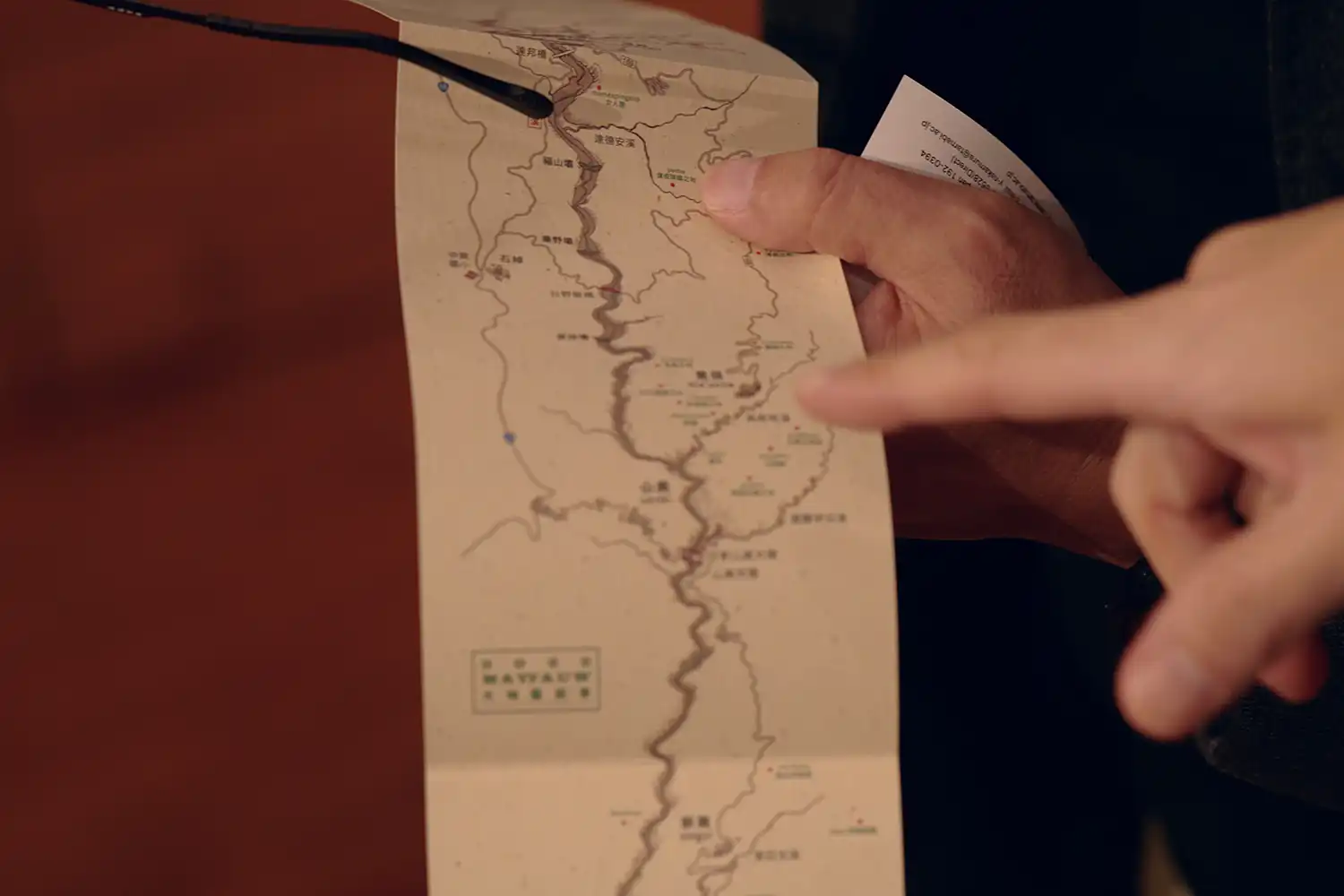
Nakamura You also engaged in a production based on the records of fieldwork. Elementary school students produced “Little Things Newspaper” in the second year. How did you proceed with this?
Gong It was done in collaboration with 10 elementary schools in the basins of the Zeng-wen River. About 20 students went to each the upstream, midstream, and downstream reaches of the river to cover stories. They had various experiences, such as staying at a hunter’s house, trying a rite of passage to jump into a waterfall lake, and planting seedlings. We named the newspaper “Little Things” because the children asked a number of small questions, such as “Where does water come from?” and “How were the trees planted?” We had them write articles about what they questioned while they visited the same place in the basin they were assigned to, and they also designed the newspaper.
Nakamura They visited the same place time and again. It is interesting. Although it does not seem too common in marketing and design research, in the fieldwork for anthropology and folklore studies, we try to visit the same place or person more than once.
Gong I believe it is easier to notice changes if you repeat the same action. For instance, when we visited Zengwen Dam on a regular basis, there was a serious drought once, and then 80 days later, it was full of water because of heavy rain. I was surprised at the fact that a river basin could look different in such a short time on account of extreme weather. We thoroughly recorded these large and small environmental changes in cooperation with photographers and displayed the photographs at the art festival.
Nakamura According to your stories, concepts and productions did not take the lead. There are community-based cultures and what happens in the basins first, and you reorganize and reconstruct the records, which becomes a work.
Gong You are right. In the third year, we conducted “farming information gathering,” in which we had a glimpse of farmers’ lives and interacted with them to observe and record their activities. At the same time, we also grew rice and water chestnuts together and held a sports event at a paddy field. Artists also held workshops. They crafted a huge deer measuring 16 by 9 meters out of bamboo using a technique of indigenous Siraya people living in the midstream area and cooked plants to create recipes. The workshops were held over 50 times, and the venue was always full of people.
Looking back, after three years of various activities, numerous people were involved in the project. Only two doctoral students and I engaged in the activities at first, and then a planner of the program and an expert who participated in the Hunter Guiding became curators because they wanted to remain involved in the art festival, and a workshop instructor took part as an artist. In this way, the number of partners grew quickly.
Nakamura The passion and enthusiasm of the participants that they wished to be involved kept spreading, and a circle of diverse people, ranging from hunters to elementary school children and farmers, was expanded. It is amazing that participants “became” curators and artists, other than the curators and artists invited right from the start.
Parliament of Things to speak for non-humans
Nakamura In your presentation for the GOOD DESIGN AWARDS, you also mentioned the “Parliament of Things” where discussions are held with the representatives of non-humans found in the Zeng-wen River. The program sounded intriguing because it can cause a stir in the anthropocentric worldview.

Gong Through our fieldwork, I became strongly aware that the Zeng-wen River is not just for humans. Non-humans, such as stones, river gravels, and plants, exist there, and it is also inhabited by eels and otters, which are rarely seen these days. They are affected by environmental destruction through climate change and flood control. What do they think and feel, living in such an environment? I thought we would need to have discussions with non-humans as members of the River Basin Community.
That being said, as they cannot speak, we cannot talk face-to-face. That was when we came up with the idea that we could act like non-humans to speak for their feelings and thoughts. The Parliament of Things is an initiative to discuss the relationship between them (non-humans) and the Zeng-wen River, their thoughts, and the future of the River.
Nakamura Does “acting like them” mean “letting them possess you”?
Gong Exactly. We had people act as if they became the thing. Participants were people involved in the art festival, such as curators, artists, and hunters. They chose a thing they would speak for, and let the thing possess them to speak for 15 minutes.
Nakamura Are there any impressive stories?
Gong The presentation of Yang Chia-Ning as the representative of stones was especially fascinating. The minute she became a stone, her personality changed.
Yang is an engineer at an aesthetics center operated by a major constructor in Taiwan and an academic studying landforms created by rivers. She has conducted studies on rivers in Japan and the United States. She is typically a methodical researcher, yet once she started to speak, she poured out her feelings toward the Zeng-wen River like a poet. She then told us how the River is in a harsh environment. It is because there is a point in the Zeng-wen River where water flows from an altitude of 2,600 meters into that of 400 meters at a stretch, and there is heavy rain in summer. It is hard for a stone in the Zeng-wen River, which is characterized by its friability, to coexist with the river.
Nakamura It is important to perfect a role in order to act like the thing. Stepping back from your own thoughts, you observe the object, grasp its characteristics, and gather information. If you learn the circumstances that the thing is in while realizing your own biases, your understanding will automatically deepen.
Gong Other than Yang, an indigenous person represented disappeared eels and otters, an environmental engineer represented flooding, and a high school geography teacher represented a river terrace to speak for their concerns about the environment and the future, with an explanation of their relationship with the Zeng-wen River.
If you walk through the basins, you will encounter those things everywhere. Each time you learn about their existence, you will have more to speak for. The number will increase to 1,000 and then to 5,000. The art festival came to an end, yet I would like to keep looking for forgotten names together with different people.
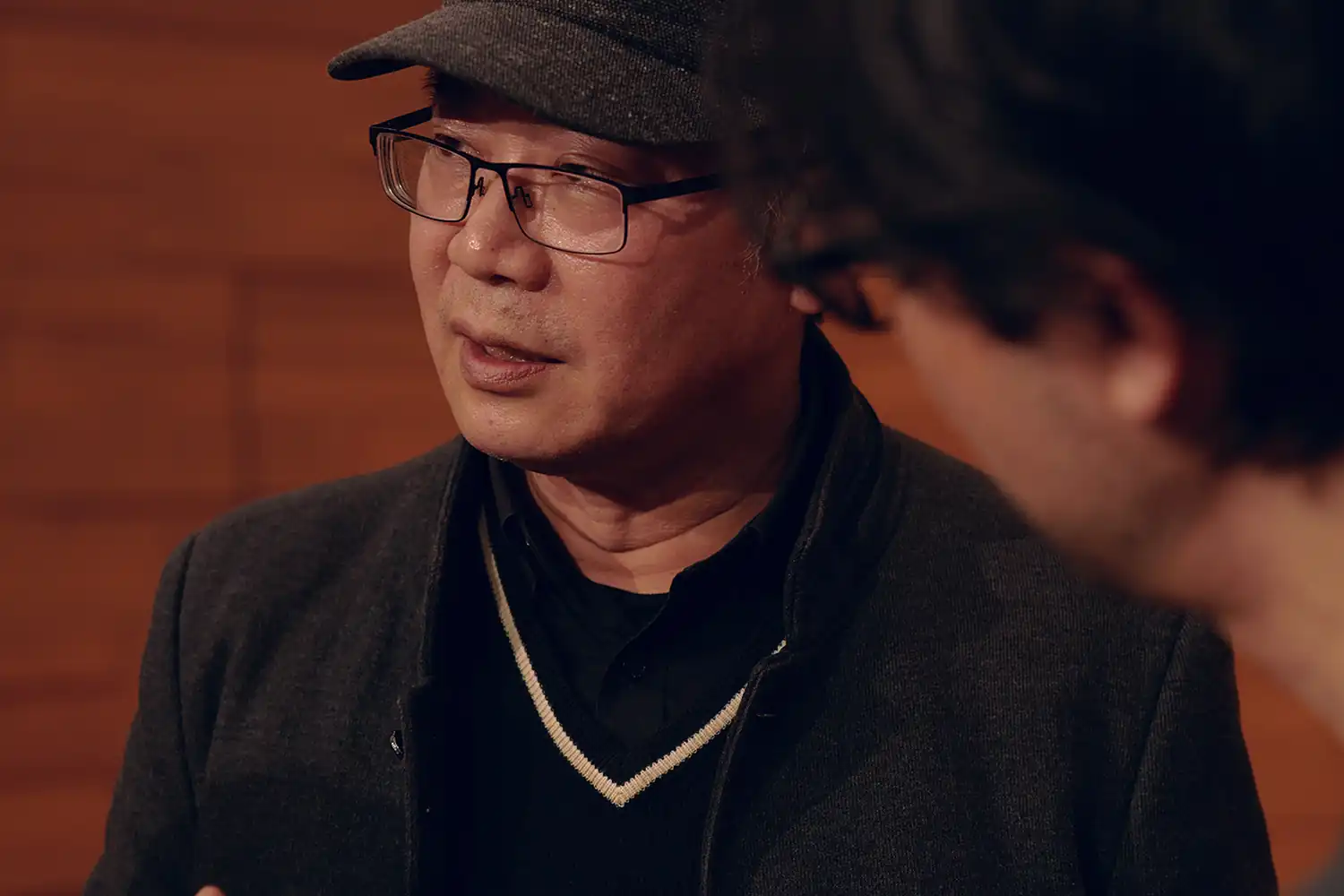
Award motivates people involved. Toward the next event in 2025
Nakamura You listen attentively to the voices of nature, and try to see what you cannot see instead of seeing what you want to see. I recognize that careful field research made the art festival unique and allowed visitors to experience a non-anthropocentric world, and the art festival gained a good reputation. I look forward to the next art festival.
Gong Thank you very much. This is a triennial held every three years, and the next event will be held in 2025. We are already in motion, searching for a theme and planning a budget.
Nakamura Enthusiasm alone cannot complete an art festival. A budget is also essential. How did you finance this art festival?
Gong We received grants from the city government and the Ministry of Culture, and we also raised funds for 2022. It was not feasible only with the government budget. However, we truly wanted people to learn about the real beauty of the Zeng-wen River, which is a common river. Because of this motivation, we raised funds for the first time.
Nevertheless, there were some curators who were against finding money on the organizers’ side. They said, “It is nonsense for us to raise funds for a project requested by the government.” The client was indeed the government, but we were also responsible for its success, as we decided to get involved in the art festival. We believed that we should do what we could do to make it happen.
Seeing us working busily to secure financial resources, the curators and other people who initially raised objections as well as the government eventually began to take a cooperative stance. I was deeply moved.
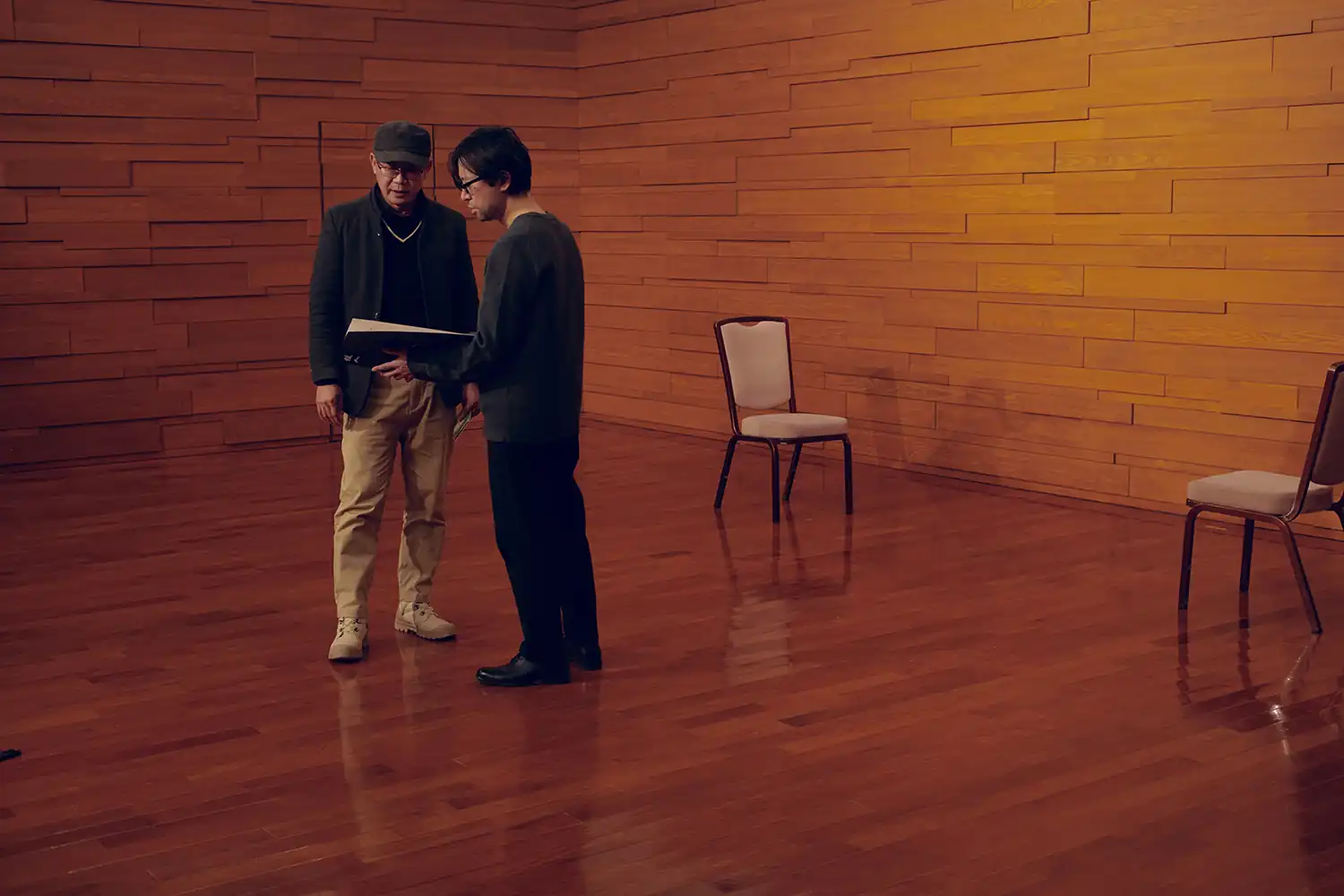
Nakamura Your practice changed people’s way of thinking.
Gong Yes. This award gave us not only great pleasure but also great significance. It proved that the art festival was a worthy event. For example, the Tainan City government as well as other governmental agencies including the Water Resources Agency, which has jurisdiction over water supply administration, gave it recognition. Surprisingly, the budget for the next event was increased.
Furthermore, I was assigned as the curator of the city development and exhibition for next year’s 400th anniversary of the founding of Tainan. It is now easier to conduct activities, and the range of my options is being enlarged.
Nakamura I suppose expectations from others are likely to rise further. What do Gong and his partners think and how do they design the process? I cannot wait for 2025.
Artists, hunters, elementary school students, farmers, otters, river stones... Transcending their respective positions and races, regions, humans, and diverse beings other than humans, which used to be disconnected, are reconnected, which I think has created a sort of “cooperativity” beyond anthropocentrism. The result of taking the time to dig up forgotten contexts and physically exploring and collecting the history and culture of the basins may have created an art festival that touches the hearts of many people and makes them want to take part in.
Mayu Sasaki
Writer
Born in 1992, graduated from Aoyama Gakuin University. After graduating, she joined a cooking school management company, where she was involved in video production. After that, she worked for Loftwork Inc. doing client work centering on web design and production, and became an independent writer in 2021. Currently, she writes interview articles and employment articles for web media. Her interests include design, business, work styles, and daily life.
Shunsuke Imai
Photographer
He was born in Minamiuonuma City, Niigata in 1993. He became independent after working for amana Inc.
Tetsuhiro Ishida
Editor
Born in 1992, graduated from International Christian University (ICU). Born in Hokkaido. After working in business development for agricultural and architectural startups, switched to editor. Runs De-Silo, an organization that supports researchers in the humanities and social sciences. Mainly focuses on covering researchers in the areas of design, sustainability, and deep tech.


